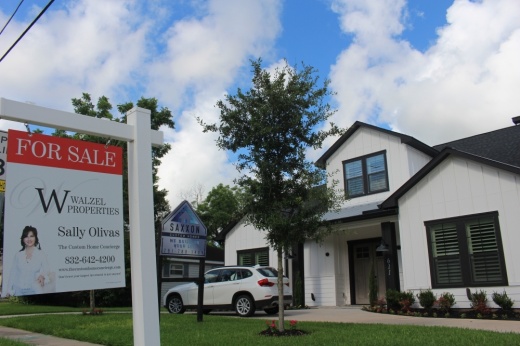Described as frenzied, brisk and unprecedented, the current real estate market is being driven by historically low inventory, record-low interest rates, and skyrocketing lumber and building material costs, Realtors and homebuilders said.
“I have been selling real estate for 30 years,” Keller Williams Realtor Pam Shockey said. “I was around when Sept. 11 happened; I was around for dot com, Fannie Mae and the subprime lending explosion. This is not a market frenzy or a bubble like that. This is a compilation of multiple things all happening at once.”
While this confluence of conditions is affecting the real estate market across the country, Jeff Wiley, CEO of the Fort Bend Economic Development Council, said Fort Bend County has always been a desirable place to live due to high-quality public schools, amenity-rich communities and a pro-business attitude.
“In good economic conditions or bad, Fort Bend [County] will be a magnet for growth as long as we keep our competitive and comparative advantage nationally and regionally,” he said in an email.
Low housing inventory
In Wiley’s 17 years at the FBEDC, Fort Bend County has never seen housing inventory levels this low, he said.Fort Bend County has had less than six months of housing inventory since October 2011, according to data from the Texas A&M University Texas Real Estate Research Center. The center describes six months of inventory as a stable market.
However, in March and April—the most recent data available—housing inventory reached 0.9 months with about 1,200 total listings on the market, according to the research center’s data.
“It’s historic. It’s earth-shatteringly historic low inventory,” said Sara Lyn Nguyen, a Realtor with Better Homes and Gardens Real Estate Gary Greene.
Driving the demand for housing are low interest rates and 30-year fixed-rate mortgages that have continued to trend downward since 1980, according to data from the Federal Home Loan Mortgage Corp., or Freddie Mac.
February’s winter storm also affected housing inventory as some potential sellers experienced flooding and damage to their house and therefore waited to put it on the market, further contributing to the low supply of inventory, Nguyen said.
“It’s just mind boggling to take all of the bits and pieces that have created the perfect storm,” Nguyen said. “I think most of us are looking for [inventory] to stay really thin through the end of the year and praying for no other big events.”
This low housing inventory, combined with rising costs of building materials, has caused homebuilders in the area to struggle to keep up with the demand for houses, M/I Homes Area President Jay McManus said. M/I Homes is building houses in the new Shipman’s Cove neighborhood east of Missouri City.
“We cannot keep up with the inventory demand,” he said. “We have a huge backlog of sold homes that we’re trying to start. We just don’t have the capacity to build much inventory.”
Rising home prices
As housing inventory began declining and demand increased in the Houston area last year, home prices escalated, Nguyen said.In Sugar Land, the median sales price for homes rose from $350,000 in 2020 to $400,000 in 2021, according to www.houstonproperties.com. Similarly, the median sales price of homes in Missouri City increased 8.2% from $231,000 to $250,000 during that same time period.
“There are people in the market today that cannot afford a home that a year ago [they] could have bought,” McManus said.
Furthermore, McManus said the relationship between prices and interest rates is fragile. He said if interest rates begin to go up, homebuyers’ purchasing power would be reduced.
“Even a half point to a point on interest rate, even though those are historically still really good rates, ... you just start losing thousands and thousands of buyers,” he said.
Nguyen said rising home prices have also increased the pressure on listing agents, who are tasked with figuring out how to price a house and deciding which offer is best.
“In every nook and cranny there’s some sort of extra stressor,” she said. “People think it’s just all fun and games for listing agents and for the sellers, but you know there’s a lot of extra stress ... as well.”
Local Realtors said another factor shaping the current market is the increasing number of out-of-state transplants moving to Texas. The state welcomed more than 537,000 new residents in 2019, according to the U.S. Census Bureau, marking the seventh year in a row the state has attracted more than 500,000 out-of-state residents.
Keller Williams Realtor Sapana Patel said she has seen an influx of homebuyers wanting to move to Sugar Land from California, New York, Virginia and Florida. Similarly, Shockey cited her experience seeing four households moving to Fort Bend County for every one moving away from the area.
Out-of-state buyers are often drawn to Texas due to its relative affordability and as an increasing number of companies relocate to the state, said Kunal Seth, a team lead at The Seth Brothers Team, a real estate team that works in both Sugar Land and Missouri City. Plus, as more people continue to work from home, they have increased flexibility to live anywhere, he said.
But, not just out-of-state buyers are contributing to the high demand for homes in Fort Bend County. Nguyen said many Houston residents who have long lived in the city to be close to their jobs are now moving out to the suburbs, where they can afford bigger houses, have more land and access other amenities.
The cost to build
The cost of both newly built and custom-built homes is also increasing, spurred by sky-rocketing prices for building materials, which are pushed by labor shortages, experts said.At M/I Homes, the cost to build a house has increased 40%, McManus said. In turn, the company’s home prices have increased by 26%. The company makes up the rest of the cost difference by cutting back on incentives and options for buyers, he said.
McManus said this is largely driven by an unprecedented escalation of building costs. A Texas A&M University report on lumber and timber prices published in June showed the cost of lumber increased 250% year over year between May 2020 and May 2021.
McManus said he has been experiencing cost increases for most building materials, specifically citing copper and resin, which are widely used in homebuilding.
“Most of those increases are not as drastic as lumber; lumber is probably the notorious star in increases,” he said. “The rest of the building components have increased in what we would call outrageous amounts, but because lumber has increased so much, they are relatively mild.”
The building material cost hikes are a product of labor shortages in manufacturing plants, McManus said. The labor shortages are in part a result of the pandemic, which the U.S. Chamber of Commerce said caused companies to lay off or furlough employees—as well as some people not returning to work due to expanded unemployment benefits.
Bricktown Custom Homes owner Steve Gandy said he predicts labor shortages will continue to affect the building industry as homebuilders work to meet the increasing demands of the buyer market.
“If they’re going from house to house to house, they’ll need more men,” he said. “Labor prices will start to escalate, so that is a way of coming into norm. It used to be really cheap to build in Texas, but it’s just not that way these days.”
A competitive market
Patel, who primarily works in the Sugar Land area for Keller Williams, said she first noticed a shift in the real estate market in January.“I put a house on the market in the Sugar Land area, and there were 66 families that came to the open house,” she said. “Within two days, I’d gotten 11 offers—all over the asking price.”
Community Impact Newspaper analyzed real estate data from the Houston Association of Realtors for 10 recently sold homes in each of the five Sugar Land and Missouri City ZIP codes. Of those 50 houses, 25 sold for above the asking price. Furthermore, 14 sold for $10,000 more than asking price, and one sold for $50,000 more.
Meredith Canny said her family sold their house in the Sienna master planned community in April 2021 and bought a new house in the same community in June 2021.
“I don’t know how people are buying houses without knowing somebody on the inside because it’s just crazy competitive and the offers so above asking price are just ludicrous,” Canny said. “We didn’t know at the time how fast the houses were going.”
Local Realtors said they often prepare their clients who are looking to buy a home that they might have to submit multiple offers before theirs is selected. This is true more so at lower price points than higher ones.
“Across the board, if you are working with a buyer and they get a house on the first try, in this market, that’s very, very lucky,” said Sonit Seth, a team lead at real estate agency The Seth Brothers Team.
Additionally, some buyers are waiving their appraisal contingency—a clause in most contracts stating if the appraisal value of the house is lower than the sales price, the buyer can renegotiate or terminate the contract. This is often done to make a buyer’s offer more appealing to sellers by removing the risk of the sale not going through, Nguyen said.
However, lenders will not authorize loans for more than the house’s appraisal price. If the appraisal contingency is waived, buyers are agreeing to pay the difference between the offer price and the house’s appraisal in cash—a trend Nguyen said was concerning.
Kunal Seth said when he represents a seller, he always recommends they accept a cash offer if one is available. This makes it harder for first-time homebuyers and lower-income buyers in Harris and Fort Bend counties to compete, Nguyen said.
“[Average buyers] might not have the extra cash or not want to put that much extra cash down,” Nguyen said. “It’s some of our buyers or consumers that are coming from out of state because they’ve sold higher-dollar-price homes. ... They typically have more liquid cash.”
While local Realtors are unsure as to how long current market conditions will last—with some estimating at least through the end of 2021 and others saying as long as a year and a half—several agreed buyer fatigue will soon start taking its toll on the market.
“There’s a lot of buyers that are getting very discouraged about how much the homes are selling for,” Patel said. “Lots of people are getting tired of constantly putting offers in and then not being accepted. Those people might take a break soon.”





